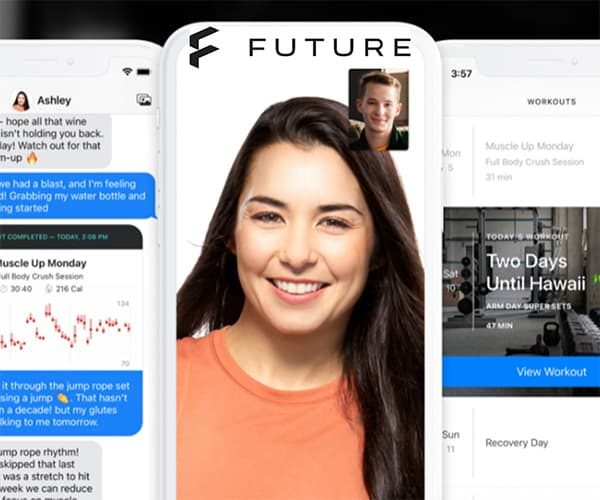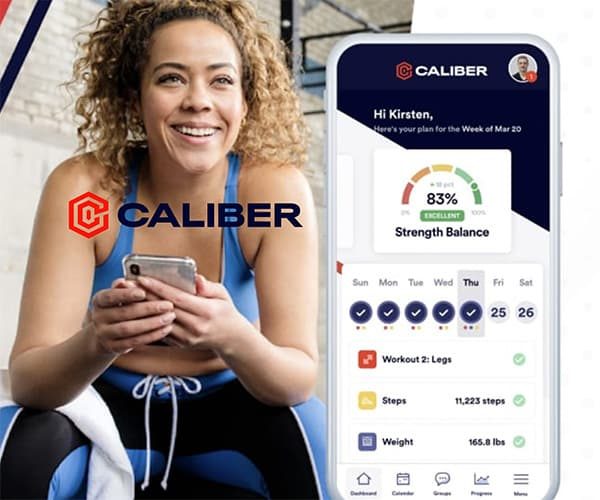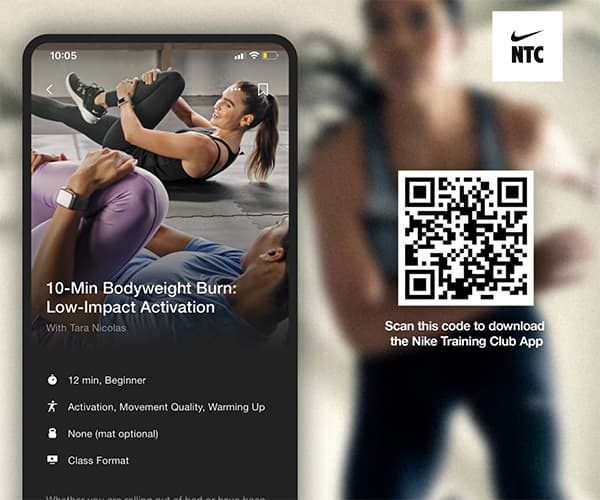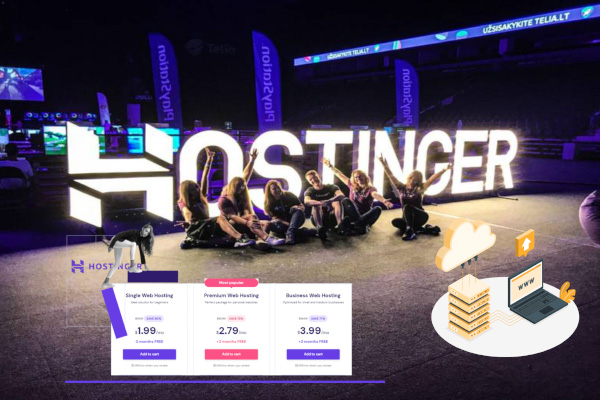Table of Contents
1. Introduction
Personalized fitness is undoubtedly the most effective way to achieve your fitness goals. Unlike generic fitness plans, personalized fitness takes into account your individual needs, objectives, and preferences. This tailored approach not only increases effectiveness but also reduces the risk of injury and boosts motivation.
There are multiple ways to reach your personalized fitness goals if you are committed. You might consider working with a personal trainer, using a personalized fitness app, or creating your own personalized fitness plan. The choice is yours, but understanding why personalized fitness is superior is crucial.
2. Why is Personalized Fitness the Best Way to Reach Your Fitness Goals?
Personalized fitness plans outshine their generic counterparts in several ways. They are meticulously crafted to suit your unique profile, ensuring that you stay engaged and see results.
Here’s why personalized fitness stands as the ultimate fitness solution.
1. Tailored to You: Personalized fitness plans are designed exclusively for you, making it more likely that you’ll adhere to your plan and see real progress.
2. Reduced Injury Risk: By considering your fitness level, injuries, and limitations, personalized fitness plans help minimize the risk of injury.
3. Motivation Booster: Personalized fitness plans are crafted to align with your interests and goals, making them inherently more motivating.
3. The Benefits of Personalized Fitness
Personalized fitness offers an array of benefits, addressing various fitness goals.
Weight Loss
Personalized fitness can help you to achieve your weight loss goals effectively. Your personalized plan will consider your current weight, fitness level, and dietary habits to create a workout regimen tailored to your specific needs.
Here’s why personalized fitness is advantageous for weight loss.
1. Increased Calorie Burn: Personalized fitness plans optimize calorie burn per workout, accelerating weight loss results.
2. Improved Metabolism: They enhance metabolism, promoting calorie burn even at rest.
3. Reduced Muscle Loss: Personalized fitness minimizes muscle loss, essential for maintaining a healthy weight.
4. Improved Body Composition: It contributes to a healthier body composition by reducing body fat and increasing muscle mass.
Muscle Gain
For those aiming to gain muscle, personalized fitness plans are efficient and effective. Such plans consider your current muscle mass, fitness level, and dietary habits to craft a workout strategy focused on muscle growth.
Here’s why personalized fitness is beneficial for muscle gain.
1. Increased Muscle Strength: It helps boost muscle strength, critical for everyday activities and athletic performance.
2. Improved Muscle Endurance: Personalized fitness enhances muscle endurance, essential for sustained efforts.
3. Increased Muscle Mass: It promotes muscle growth, improving overall body composition and health.

Improved Cardiovascular Health
Cardiovascular health is a cornerstone of overall well-being, and personalized fitness can contribute to its enhancement. By strengthening the heart, lungs, and improving circulation, personalized fitness offers these benefits for cardiovascular health.
1. Reduced Heart Disease Risk: It lowers blood pressure and cholesterol levels, reducing the risk of heart disease.
2. Improved Stroke Prevention: Personalized fitness enhances stroke prevention by maintaining healthy blood pressure and cholesterol levels.
3. Increased Aerobic Capacity: It boosts aerobic capacity, enhancing your body’s ability to utilize oxygen during exercise.
4. Overall Fitness Improvement: Personalized fitness bolsters overall fitness by enhancing cardiovascular health, strength, and endurance.
Sports Training
Competitive athletes can rely on personalized fitness to enhance their performance and achieve athletic goals. Tailored plans consider your specific sport and training objectives to create a workout strategy aligned with your aspirations.
Here are some advantages of personalized fitness for sports training.
1. Improved Performance: Personalized fitness enhances strength, endurance, speed, and agility, translating into improved athletic performance.
2. Reduced Injury Risk: It reduces the likelihood of injuries by strengthening muscles and joints and improving balance and coordination.
3. Enhanced Recovery: Personalized fitness aids in post-workout and competition recovery.
4. Increased Confidence: It boosts self-confidence by preparing athletes for competition.
Injury Prevention
Injury prevention is a crucial aspect of any fitness plan. Personalized fitness is particularly effective in this regard, as it takes your unique fitness level, limitations, and risk factors into account.
Here’s how personalized fitness contributes to injury prevention.
1. Enhanced Muscle Strength and Endurance: Stronger and more enduring muscles are less prone to injury.
2. Improved Balance and Coordination: Better balance and coordination reduce the risk of falls and accidents.
3. Increased Flexibility: Flexible muscles and joints are less susceptible to injury.
4. Improved Form and Technique: Proper form and technique significantly decrease the risk of injuries.
You Will Also Love This Article
General Fitness and Well-being
Personalized fitness plans help you improve your general fitness and well-being. They promote your strength, cardiovascular health and balance along with flexibility and endurance. Additionally, they also play an important role to reduce stress, sleep well, and having a good mood.
Here’s why personalized fitness is advantageous for overall fitness and well-being:
1. Increased Energy Levels: Personalized fitness enhances energy levels by improving cardiovascular health and muscle endurance.
2. Reduced Risk of Chronic Diseases: It decreases the chance of getting chronic diseases such as heart disease, stroke, diabetes and certain types of cancers.
3. Improved Mental Health: Personalized fitness is highly effective in stress reduction. It also helps to improve sleep quality and boosts your mood.
4. Increased Life Expectancy: It contributes to an extended life expectancy by reducing the risk of chronic diseases and enhancing overall health.
4. How to Get Started with Personalized Fitness
Setting up on your journey towards personalized fitness is an exciting and empowering endeavor. To help you take those initial steps, here are three effective methods for getting started.
Work with a Personal Trainer

Why it’s Beneficial: Personal trainers are seasoned experts who can provide you with invaluable guidance and support. They possess the knowledge to craft a personalized fitness plan that aligns perfectly with your objectives.
How to Start: Begin by researching and selecting a certified personal trainer whose expertise matches your fitness goals. Schedule an initial consultation to discuss your objectives and preferences.
What to Expect: Your personal trainer will create a tailored fitness plan and demonstrate exercises, ensuring that you perform them correctly and safely. They’ll also offer continuous motivation and adapt the plan as you progress.
Utilize a Personalized Fitness App
Why it’s Beneficial: Personalized fitness apps offer convenience and flexibility. They harness technology and your input to design a customized workout plan that suits your specific goals and fitness level.
How to Start: Browse through the plethora of available fitness apps, paying attention to user reviews and ratings. Download and install your chosen app.
What to Expect: You will be asked to input details about your fitness objectives along with your current fitness level and preferences. The app will generate a personalized workout plan according to the provided information. Later, you can follow that workout plan.
Create Your Own Personalized Fitness Plan
Why it’s Beneficial: Crafting your own fitness plan provides you with the opportunity to deeply personalize every aspect of your workouts, ensuring they align perfectly with your goals and preferences.
How to Start: Begin by setting clear and achievable fitness goals. Assess your current fitness level and consider any limitations or preferences you may have.
What to Expect: Design your workout plan by selecting exercises, scheduling workout sessions, and determining the intensity and duration of each session. You have the freedom to choose activities that you enjoy and that resonate with your fitness aspirations.
No matter which path you choose, remember that the most important aspect of starting personalized fitness is taking that initial step. Each method offers its unique benefits, allowing you to embark on a fitness journey that suits your needs and preferences.
5. What to Consider When Creating a Personalized Fitness Plan
Creating a personalized fitness plan is an urgent move toward accomplishing your fitness objectives. This is the very thing that you want to consider.
5.1 Your Fitness Goals
Begin by clearly defining your fitness objectives. Whether it’s weight loss, muscle gain, improved cardiovascular health, sports training, injury prevention, or general fitness and well-being, knowing your goals is essential for crafting an effective plan.
5.2 Your Current Fitness Level
Understand your current fitness level. How often do you exercise? What types of exercises do you enjoy? What is your cardio and strength training capacity? Tailor your plan to your current capabilities, gradually increasing intensity and duration.
5.3 Any Injuries or Limitations
If you have injuries or limitations, such as joint pain, back pain, or chronic health conditions, consider them when creating your fitness plan. Modify or avoid exercises that could exacerbate these issues, and listen to your body to prevent injury.
5.4 Your Lifestyle and Preferences
Factor in your lifestyle and preferences. How much time can you dedicate to exercise? Do you prefer home workouts or gym sessions? Are you motivated by group fitness classes or solo workouts? Your plan should align with your daily routine and personal preferences.
5.5 Additional Tips for Creating a Personalized Fitness Plan
– Set realistic goals, starting with achievable objectives and gradually increasing the intensity of your workouts.
– Incorporate variety into your plan to target all major muscle groups, preventing boredom and plateaus.
– Ensure your plan challenges you without being overly strenuous to avoid injury.
– Maintain consistency with at least three workouts per week, each lasting at least 30 minutes, to see faster results.
– Listen to your body, stopping immediately if you experience pain during a workout. Avoid pushing yourself too hard to prevent injuries.
Creating a personalized fitness plan might appear to be overwhelming, however recall that there’s nobody size-fits-all methodology. By considering your unique needs and goals, you can design a plan that leads you to success.
6. How to Find a Personalized Fitness Trainer
1. Ask for Recommendations: Consult friends, family, and colleagues for recommendations. Their positive experiences with trainers could lead you to a professional who suits your requirements.

2. Online Search: Explore online directories that specialize in personalized fitness trainers in your locality. You can refine your search by location, specialization, and pricing.
3. Read Reviews: Peruse online reviews to gain insights into the reputation and client satisfaction of potential trainers. This step will help you narrow down your choices and identify trainers with strong track records.
4. Schedule Consultations: After identifying potential trainers, schedule consultations with each one. This eye-to-eye collaboration permits you to seek clarification on some pressing issues, survey their character, and comprehend their training style.
6.1 Factors to Consider while Selecting a Personalized Fitness Trainer
1. Certification: Make sure to check the trainer is certified from a reputable organization. The National Academy of Sports Medicine (NASM) or the American Council on Exercise (ACE) can be among these organizations.
2. Experience: Choose a trainer with experience in training individuals with your fitness level and goals.
3. Personality Fit: Select a trainer whose personality aligns with yours. Given the amount of time spent together, a good rapport is essential.
4. Cost Consideration: A personal training is like an investment in your health. Consider a trainer that fits best according to your budget.
Once you’ve selected a personalized fitness trainer, communicate your fitness goals and any injuries or limitations you may have. This information is crucial for the trainer to create a safe and effective workout plan tailored to your unique needs.
You can confidently find a personalized fitness trainer by following these tips.
7. Popular Personalized Fitness Apps
The surge in popularity of personalized fitness apps is driven by individuals seeking convenient solutions to attain their fitness objectives without the need to engage a personal trainer. These applications provide an array of functionalities, including tailored exercise routines, nutritional monitoring, and a supportive online community.
1. Future
“Future” is a personalized fitness application that utilizes artificial intelligence to craft a personalized exercise regimen exclusively for you. This app considers your fitness aspirations, current experience level, as well as any injuries or limitations you may have. Moreover, “Future” offers live, in-the-moment feedback and coaching as you engage in your workout sessions.
2. Caliber
“Caliber” presents itself as a tailored fitness application, boasting a diverse array of workout programs spanning strength training, cardio, and HIIT. This app harnesses the power of machine learning to curate a customized fitness regimen, meticulously designed around your fitness aspirations, experience level, and preferences. What’s more, Caliber provides comprehensive video guidance and tracking tools.
3. Noom
“Noom” on the other hand, emerges as a personalized health and fitness application, dedicated to aiding weight loss and enhancing overall well-being. This app deploys a wide range of resources and tools, including individualized meal plans, recipes, and expert coaching, to assist you in achieving your fitness objectives.
4. Sweat
“Sweat” is yet another personalized fitness application, thoughtfully tailored to cater to the fitness needs of women. Offering a diverse selection of workout programs encompassing HIIT, Pilates, and strength training, the app also extends its reach to include nutrition plans and a collection of delectable recipes.
5. Nike Training Club
“Nike Training Club” stands as a personalized fitness application, boasting an extensive range of workout programs tailored to all proficiency levels, from novices to experts. Additionally, the app offers valuable nutrition advice and engaging fitness challenges.
6. MapMyRun
“MapMyRun” on the other hand, emerges as a personalized fitness app with a primary focus on tracking your running and walking activities. This app goes beyond mere tracking, providing users with specialized training plans, nutritional guidance, and a supportive community.
7. Peoloton Digital
“Peloton Digital” presents itself as a personalized fitness app that delivers both live and on-demand workout classes spanning various disciplines, including cycling, running, yoga, and strength training. As an added benefit, the app dispenses nutritional insights and stimulating challenges.
8. FitBod
“FitBod” takes personalized fitness to the next level by generating tailor-made workout plans based on your unique fitness objectives, proficiency level, and available equipment. The app goes the extra mile with comprehensive video instruction and advanced tracking tools.
9. JEFIT
“JEFIT” specializes in tracking strength training workouts, offering users access to a substantial exercise database comprising over 1,300 options. Furthermore, the app provides workout plans and training programs to facilitate your fitness journey.
10. Daily Burn
“Daily Burn” rounds out the lineup, providing a personalized fitness app catering to a wide spectrum of proficiency levels. This app delivers diverse workout programs, including HIIT, Pilates, and strength training, in addition to furnishing nutritional tips and motivational challenges.
8. Sample Personalized Fitness Plans for Different Goals
8.1 Weight Loss Fitness Plan
When pursuing a weight loss fitness plan, the primary objective is to establish a calorie deficit, whereby you burn more calories than you consume. Achieving this balance involves a combination of cardiovascular and strength training exercises.
Here’s a sample weight loss fitness plan to guide your efforts.
Warm-up
– Begin with 5 minutes of light cardio, such as a brisk walk or a gentle jog.
– Follow this with 5 minutes of dynamic stretches, including exercises like arm circles and leg swings.
Workout
– Allocate 20 minutes to cardiovascular exercises, such as running, biking, or swimming. Choose the activity that best suits your preferences and circumstances.
– Dedicate another 20 minutes to strength training, incorporating exercises like squats, push-ups, and lunges. These exercises target various muscle groups, enhancing overall fitness and calorie expenditure.
Cool-down
– Conclude your workout with 5 minutes of light cardio, similar to the warm-up phase.
– Complete your session with 5 minutes of static stretches, focusing on holding positions like the hamstring stretch or calf stretch to aid muscle recovery and flexibility.

It is important to adjust the intensity and duration of your workouts in accordance with your fitness level and specific weight loss goals. Furthermore, always put an attention to your body’s signals to allow it for adequate rest and recovery when necessary.
8.2 Muscle Gain Fitness Plan
A muscle gain fitness plan should revolve around the principle of progressive overload. This entails the gradual increase in either the weight lifted or the number of repetitions performed over time, thereby stimulating muscle growth.
Here’s a sample muscle gain fitness plan as a reference.
Warm-up
– Commence with 5 minutes of light cardio activity.
– Follow this with 5 minutes of dynamic stretches to prepare your muscles for the upcoming workout.
Workout
– Execute 3 sets of 8-12 repetitions for each exercise.
– Select compound exercises that engage multiple muscle groups such as squats, bench presses and deadlifts.
Cool-down
– Conclude your workout with 5 minutes of light cardio, akin to the warm-up phase.
– Complete your session with 5 minutes of static stretches to enhance muscle flexibility and facilitate recovery.

It’s crucial to tailor the number of sets, repetitions, and exercises to align with your current fitness level and specific muscle gain objectives. Additionally, always remain attuned to your body’s cues and incorporate necessary rest periods to promote optimal recovery and progress.
8.3 Improved Cardiovascular Health Fitness Plan
A fitness plan aimed at enhancing cardiovascular health should center around cardio exercises that raise your heart rate and enhance your respiratory function. This approach contributes to the strengthening of your heart and lungs while fostering overall cardiovascular well-being.
Here’s a sample fitness plan geared toward improving cardiovascular health.
Warm-up
– Initiate with 5 minutes of light cardio activity.
– Follow this with 5 minutes of dynamic stretches to prepare your body for the forthcoming workout.
Workout
– Engage in 30-45 minutes of moderate-intensity cardio exercises, which may include activities like running, biking, or swimming.
Cool-down
– Conclude your workout with 5 minutes of light cardio, mirroring the warm-up phase.
– Finalize your session with 5 minutes of static stretches, enhancing flexibility and aiding muscle recovery.

Feel free to adapt the intensity and duration of your cardio workouts to align with your current fitness level and specific cardiovascular health goals. Always prioritize listening to your body’s signals and incorporate adequate rest as needed for your well-being.
8.4 Sports Training Fitness Plan
A sports training fitness plan should be tailored to the specific demands of the sport you are preparing for. This entails a focused approach on exercises and drills that directly enhance your performance in that particular sport.
Here’s a sample sports training fitness plan designed for a basketball player.
Warm-up
– Initiate with 5 minutes of light cardio to get your heart rate up.
– Follow this with 5 minutes of dynamic stretches to promote flexibility.
– Dedicate the next 5 minutes to sport-specific drills, such as shooting and dribbling drills, to sharpen your basketball skills.
Workout
– Allocate 20 minutes to plyometric exercises like box jumps and squat jumps, which boost explosive power and agility.
– Invest another 20 minutes in strength training exercises, including squats, lunges, and rows, to enhance your physical strength and endurance.
Cool-down
– Conclude your workout with 5 minutes of light cardio to gradually reduce your heart rate.
– Wrap up the session with 5 minutes of static stretches to improve muscle flexibility and aid recovery.

Feel free to adapt the intensity and duration of your workouts as per your individual needs and performance goals. Always remain mindful of your body’s signals and incorporate necessary rest and recovery periods for optimal progress and injury prevention.
9. Tips for Staying Motivated on Your Personalized Fitness Journey
Sustaining motivation throughout your personalized fitness journey can be quite the challenge, but it’s absolutely vital for accomplishing your goals.
To help you stay on course, consider these tips.
1. Set Realistic Goals: Avoid the temptation to push yourself too hard too quickly. Initiate with small, attainable objectives, and progressively ramp up the intensity of your workouts over time.
2. Choose Enjoyable Workouts: Choose exercise routines that genuinely engage you. When you enjoy your workouts, you’re more inclined to adhere to them. Find activities that you find both enjoyable and challenging.
3. Prioritize Your Workouts: Schedule your workout sessions in advance and treat them with the same level of importance as any other essential appointment or commitment.
4. Seek a Workout Buddy: Partnering up with a friend or family member for your workouts can bolster your accountability and motivation levels.
5. Track Your Progress: Document your workouts and monitor your progress either in a journal or through a fitness app. Witnessing your advancements can be a powerful motivator.
6. Reward Yourself: When you reach a fitness milestone, celebrate your achievement with a special treat or reward. This not only recognizes your accomplishments but also fuels your motivation to persevere.
9.1 Additional Tips for Sustained Motivation
1. Visualize Success: Dedicate a few moments each day to visualize yourself successfully attaining your fitness objectives. This mental exercise can help you maintain focus and enthusiasm.
2. Surround Yourself with Positivity: Spend time with individuals who endorse your fitness goals and believe in your capabilities.
3. Embrace Setbacks: Understand that setbacks are a part of the journey, particularly when you’re just starting out. Try not to allow them to hinder your progress. All things being equal, recognize them, gain from them, and go ahead.
4. Recall Your Why: You often encounter the moments of discouragement. Don’t be upset. Take a pause and think in the first place, why you set up on your fitness journey. What you want to achieve and what your goals are? Keeping these objectives in mind will fuel your motivation.

Remember, staying motivated is not the endpoint, it is definitely an ongoing process. There will be ups and downs along the way. You will undoubtedly reach your personalized fitness goals as long as you are committed and consistently move forward.
10. Conclusion
The Significance of Consistency and Patience
Consistency and patience serve as cornerstones for triumph throughout your personalized fitness journey. Instant results should not be anticipated; achieving your fitness objectives necessitates time and dedicated effort. However, by adhering to your plan and maintaining patience, you will inevitably attain your desired outcomes.
Consider the Following Tips to Uphold Consistency and Patience
1. Establish Attainable Milestones: Set small, realistic goals to bolster motivation and maintain your trajectory.
2. Design a Feasible Workout Plan: Tailor your workout plan to harmonize with your schedule and lifestyle, facilitating adherence.
3. Find a Workout Partner or Join a Class: Enlisting the support of a workout companion or participating in a fitness class can heighten accountability and motivation.
4. Listen to Your Body: Pay heed to your body’s cues and grant it the necessary rest to prevent overexertion and potential injury.
5. Celebrate Achievements: Regardless of size, acknowledging your accomplishments bolsters motivation and keeps you aligned with your objectives.
How to Celebrate Your Success
Marking your achievements constitutes a pivotal facet of your personalized fitness journey, fostering motivation and keeping you on course.
Here are some ideas for commemorating your successes.
1. Indulge in a Special Treat: Reward yourself with something special, be it a new workout outfit, a relaxing massage, or a night out with friends.
2. Document Your Milestones: Maintain a journal in which you record your accomplishments. This practice assists in tracking progress and realizing the distance you’ve covered.
3. Share Your Successes: Communicate your achievements with friends and family, leveraging their support to stay accountable and motivated.
4. Set Fresh Objectives: After reaching a milestone, establish new goals to continuously challenge yourself and advance further.
11. Resources for Accessing Additional Information on Personalized Fitness
Numerous resources are at your disposal for delving deeper into the realm of personalized fitness. Here are a few recommendations.
Books: You can explore various books on personalized fitness. Few of them include notable titles such as “The 4-Hour Body” by Timothy Ferriss and “The New Rules of Lifting” by Lou Schuler and Alwyn Cosgrove.
These resources provide valuable insights and guidance to propel you forward on your personalized fitness journey.
12. Frequently Asked Questions (FAQs)
1. Why Should I Choose Personalized Fitness Over Generic Plans?
Discover why personalized fitness stands out as the most effective approach to reaching your fitness goals and how it differs from generic fitness plans.
2. What Are the Key Benefits of Personalized Fitness?
Uncover the numerous advantages of personalized fitness, including how it can accelerate your progress and reduce the risk of injury.
3. How Can I Begin My Personalized Fitness Journey?
Learn the essential steps to initiate your personalized fitness journey, whether it’s through a trainer, fitness app, or creating your own plan.
4. What Factors Should I Consider When Crafting My Personalized Fitness Plan?
Dive deep into the crucial elements of creating a fitness plan that caters to your individual needs, encompassing goals, fitness level, limitations, lifestyle, and more.
5. What Should I Look for When Choosing a Personalized Fitness Trainer?
Gain insights into the key factors to consider when selecting a personalized fitness trainer, ensuring a productive and supportive partnership.


















